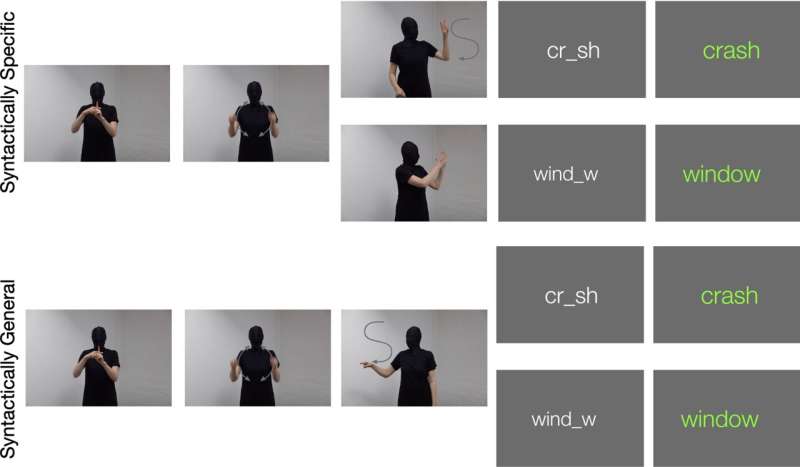This article has been reviewed according to Science X's editorial process and policies. Editors have highlighted the following attributes while ensuring the content's credibility:
fact-checked
peer-reviewed publication
proofread
Can codified gestures help language learners master grammar rules?

A recent study from the Institute of English Language and Literature at Freie Universität Berlin has shown that using codified gestures as a teaching method may make it easier for children and adolescents to understand the grammar rules of a foreign language. Researcher Natasha Janzen Ulbricht has been investigating how different hand gestures can contribute to procedural learning during language lessons.
Her study focused on grammatical morphemes, the smallest unit of language that carries meaning, such as the plural {-s} and possessive {-s}. This innovative teaching method was tested in a primary school classroom. Tests carried out after the lessons showed that learners found it easier to internalize grammar rules and were able to apply these rules more readily when gestures which distinguish between grammatical morphemes were used as a learning aid.
The results of the study suggest that this teaching method should be further developed and refined. It also recommends that this approach be included in training programs for language teachers. The study was published in the journal PLOS ONE in February 2023.
Approximately one third of children and adolescents in Germany attend a school where the main language spoken is not their first (or only first) language. This makes it all the more necessary that additional support is provided to help students learn the language and understand its grammar. Gestures could be a useful tool in this respect.
"We have neurocognitive data that support the idea of gestures being closely related to spoken language and evidence that gestures support memory when learning a language," explains Janzen Ulbricht. "Just as written notes can act as memory aids, gestures can provide a stable physical reference for language learners—even though speech is inherently ephemeral."
Words and sentences rely on units of meaning and grammatical elements, known as "morphemes." Janzen Ulbricht says that one of the challenges in acquiring languages in school lies in correctly arranging these units and being able to "predict" the next element in a given context. Codified gestures could help young learners of English who struggle with grammatical morphemes, such as the plural {-s} and possessive {-s} understand what they hear and improve the predictions they make.
"Gestures offer a means of visually differentiating between grammatical morphemes that differ in meaning but sound the same," says Janzen Ulbricht. Since instructional gestures can be used independently of any given first language, teaching gestures may be particularly useful when teaching multilingual students.
Natasha Janzen Ulbricht is a researcher in English didactics and applied linguistics at Freie Universität Berlin. Her research explores how communicative movements can be used as a teaching tool in the classroom. She is also a specialist in training English language instructors and has hands-on experience in educating teachers in Germany, Zambia, and the US.
More information: Natasha Janzen Ulbricht et al, Can grammatical morphemes be taught? Evidence of gestures influencing second language procedural learning in middle childhood, PLOS ONE (2023). DOI: 10.1371/journal.pone.0280543
Journal information: PLoS ONE
Provided by Freie Universität Berlin





















